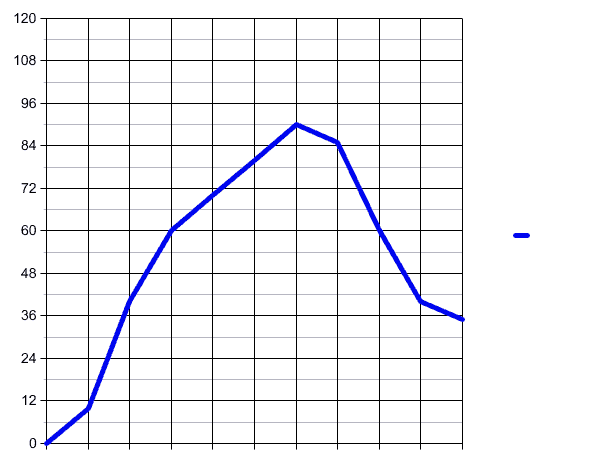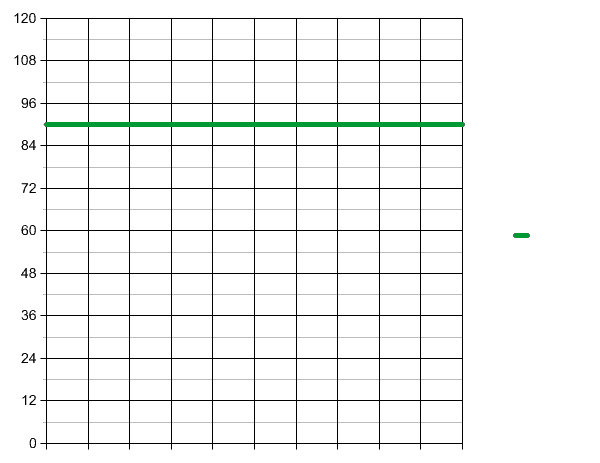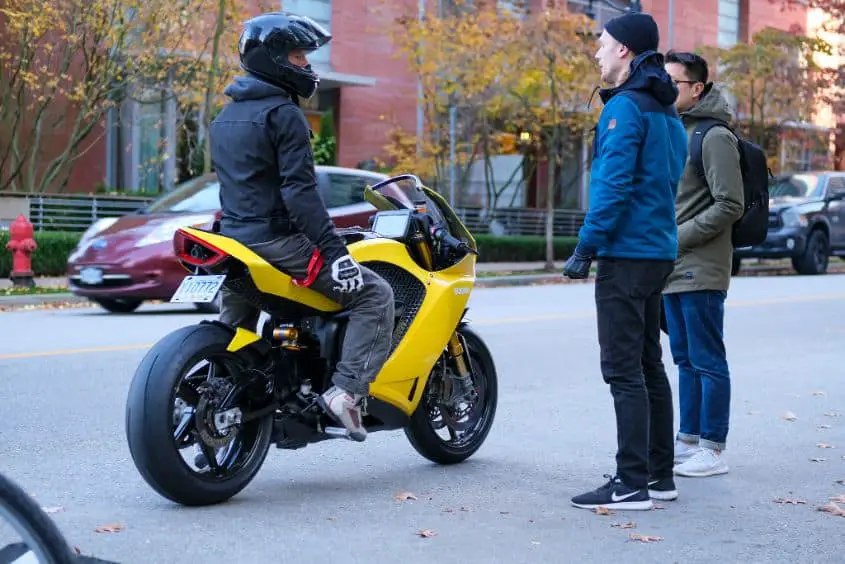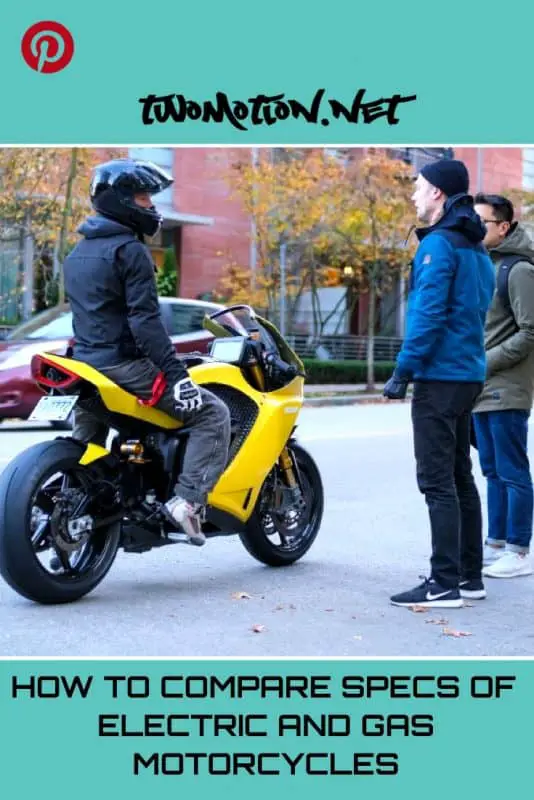Even though electric motorcycles are mostly similar to gas motorcycles, it is somewhat confusing to compare their performance specs as you need to consider that they work differently. The best way to go about it is to compare other values that are easier to understand and measure. This would include top speed, weight, range and some others.
Overview
In this article, we discuss how we should be comparing the performance of electric motorcycles to gas motorcycles. It requires some knowledge of the formulas to understand what some values really mean.
We will discuss the following:
- Why it’s difficult to compare specs
- Which specs we can compare
Why it’s difficult to compare specs
Comparing specs of electric motorcycles and gas motorcycles doesn’t seem that complex at first. But it does get complicated when we need to compare power and torque. Not only that but most people don’t really have a sense of what specs mean on electric motorcycles.
Even if they did, those specs still need to be used to calculate actual performance due to weight, efficiency, etc.
The thing is, we still need to adjust and get used to these kinds of specs. Right now, most people don’t know what all those numbers mean on electric motorcycles.
And when you try to compare them to specs that you do know something about, you soon realise that you aren’t measuring the same stuff. And in the case of torque, you need to consider that electric motorcycles have an almost constant torque range whereas gas motorcycles’ toque has a peek (see graphs below).


Which specs we can compare
The specs that we can compare are the simplest ones of them all. It makes sense to work with these values because just about anyone can understand them and it doesn’t matter that much if the motorcycle is gas-powered or electric powered.
These are the best specs to use when comparing them with one another:
- Top speed
- 0-60 mph / 0-100kph
- The range on a single tank or charge
- Wet weight
- Braking distance
- Seat height
- Other electronics
Top speed
The top speed of a motorcycle is a good way to know what kind of power and torque a motorcycle is able to generate along with its aerodynamics. Some motorcycles are electronically limited to a certain speed which also plays a role in this spec.
What you really want to know is what the motorcycle is capable of and this is true for all the specs that we compare.
0-60 mph / 0-100kph
While Americans measure the time it takes to get to 60 mph from standstill, people in other countries measure the time it takes from standstill to 100 kph. But it’s really more or less the same thing when 60 mph is equal to 96.6 kph.
This spec is great for determining how fast a motorcycle is (how fast it’s capable of getting up to a certain speed) and it doesn’t matter at all how it’s powered.
The range on a single tank or charge
Fuel tank capacity and battery size have never really given us a good indication of how far you are able to travel. This is because some ga-powered motorcycles are more efficient than others and the same can be said for electric-powered motorcycles.
The thing that gets me worked up about this is that everyone is measuring range differently. You’ll see things like “city range”, “highway range”, “combined range”. And to make it worse, there are different speeds in which they use to determine the range or they use words like “maximum range” instead of “average range”.
The world should decide on one way to measure these two ranges:
- Average city range
- Average highway range
That’s it. Nothing more, nothing less. There should be a standard GPS speed for highway range that everyone uses. Also, there should be a standard GPS top speed and standard acceleration and deceleration for everyone to determine city range. Other things should also be standardised like the weight of the rider.
The fact that there isn’t a universal standard is a pitty. There should be an organisation that has a special treadmill to test motorcycles. The manufacturer gets a certificate for each one of their models and we all know we are looking at the same thing.
Wet weight
I have no idea why dry weight is even in a spec sheet other than for shipping. But I will say, that if they do the effort to get the dry weight they should be required to add the wet weight.
In my opinion, if a manufacturer only specifies dry weight, they are trying to deceive you and you can be sure some other specs are not what you think it is.
Wet weight is the right spec to look at when determining how heavy a motorcycle is. And I would like to add that manufacturers should start specifying the wet weight for each variant of their models; not just the base model. If they don’t, I see that as nothing but decisive. Why can’t they be honest?
Braking distance
The size of your brake disks doesn’t mean anything on a spec sheet. How far is the bike going to go after I slam the brakes? That is the real question. And the only one I’m concerned about when looking at the brakes. So it has ABS… How effective is it?
This can be measured on any motorcycle regardless of how it’s powered. Especially now that regenerative braking is also here. We are no longer tied to only brake pads and disks.
Seat height
Seat height is easy to measure and the bike doesn’t even need to have an engine or motor for you to determine what the seat height is. This information is especially useful to those who are bit shorter than the average rider.
Other electronics
Most electronics on motorcycles are unique and even when similar, difficult to compare. Keep in mind that you want to measure what it does not some weird numbers that have no meaning.
For example, you wouldn’t want to know the processing power of the system that tracks cars around you. Instead, you want to know how many cars it can track and when you get warnings.
Final words
If I haven’t made this clear yet, some specs are useless. The simple ones are usually those that tell us the most and which we can use across various machines, gas or electric.
Featured image by Damon Motorcycles.
I always try to keep my articles interesting and informative. And I’m always thankful when they are shared on social media platforms or Pinterest.


